How Does a Tankless Water Heater Work? Facts & FAQ
-
Pete Ortiz
- Last updated:
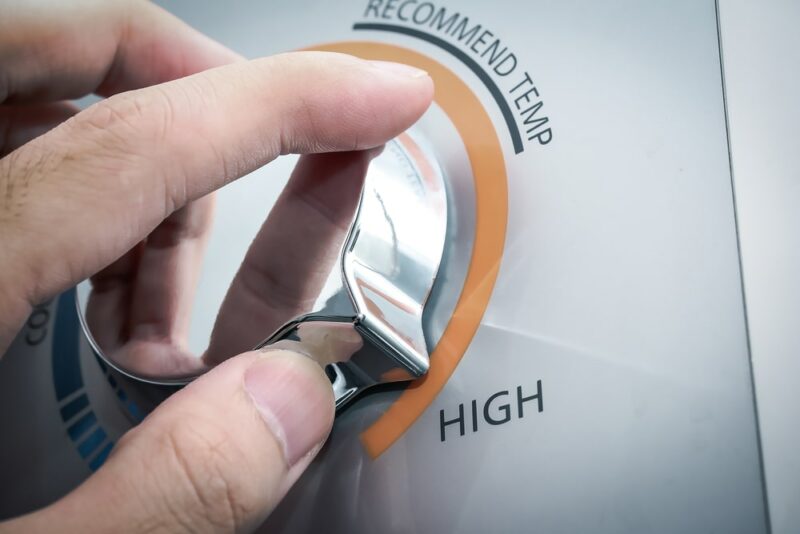
Each time you open the tap or shower, you’re thankful that the trickle coming at you isn’t ice cold but warm or even hot, depending on your preference. As such, you want a water heating system that saves energy, doesn’t promote waste, and won’t require waiting for the water to heat up.
Traditional water heaters, such as storage tank heaters, cause energy wastage, inefficiency, and performance issues related to mineral buildup. A tankless water heater, also known as an instantaneous or demand-type water heater, provides hot water only when needed. An increasingly popular alternative, a tankless water heater offers you convenience, efficacy, and less risk of misuse, but how does it work?
This article explores how a tankless water heater works and why it trumps traditional water heaters in every sense. Read on to find out how cost and energy effective these types of water heaters are and the different types available on the market.
How Does a Tankless Water Heater Work?
While traditional water heaters feature a tank where water is stored and heated before use, tankless water heaters only heat the needed water. With an outflow capacity of two to five gallons a minute, a tankless water heater doesn’t require continuous storage of the water it heats.
These conventional water heaters use electricity, natural gas, propane, or fuel oil to keep water hot even when it’s not in use. That translates to severe energy and water wastage, with low efficiency, as you’ll have to wait for the water to heat when you start them up.
Tankless water heaters don’t store water, and they work by using gas or electricity to heat cold water immediately after it passes through the unit 1. An instant heating process is triggered when cold water passes through the tankless water heater. Instead of holding water in a reservoir tank, the heater only kicks in when you put on a hot water tap and is off when none is required.
They’ve been the norm in Asia and Europe for decades but only recently have they gained traction in the US, thanks to the green energy movement.
You can save substantial energy costs with a tankless water heater by conserving electricity, propane, or natural gas. A tankless water heater is also more durable than the tank variety, takes up less space, and is always ready to provide hot water. They tend to require less maintenance, especially the electric type, as you can easily clean the screen filter regularly and with ease.
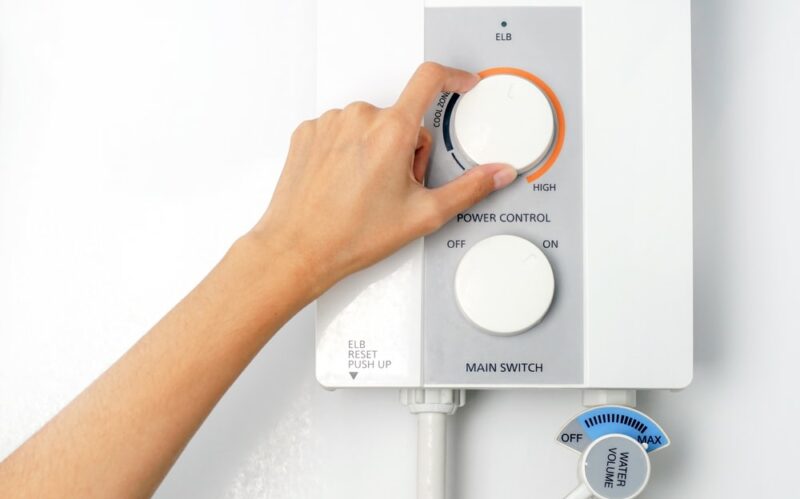
What Are the Different Types of Tankless Water Heaters?
Before settling on a water heater for your home, you must find the best one that will fit your budget and a size that’s suitable for your plumbing system, fuel type, water pressure, and your water pipes.
Besides your tankless water heater’s fuel type, whether electric, propane, or natural gas, there are other types depending on their modes of operation. Each of these has its amount of energy efficiency and installation requirements. They include indoor, outdoor, condensing, non-condensing, and hybrid. It’s best to speak to a professional before selecting one.
1. Indoor Tankless Water Heaters
Indoor tankless water heaters are either propane, gas, or electric-powered. Still, they require venting to direct the airflow outside, especially if they use propane or natural gas as fuel, but they are protected from the elements.
An indoor tankless water heater has a control panel that’s exposed to show you the temperature of the water and the amount of energy consumed. It’s small and portable, enabling installation in any part of your house, preferably near where hot water is required.
2. Outdoor Tankless Water Heaters
An outdoor tankless water heater is suitable if you live in a mild-weather area 2. It is designed to withstand inclement weather like snow, wind, or rain. It’s cheaper to install compared to a gas-powered indoor tankless water heater since no ventilation pipes are required.
3. Non-Condensing Tankless Water Heater
A primary heat exchanger is used to heat the water in a non-condensing tankless water heater, creating an exhaust for hot gasses released outside the house. They’re expensive to install as the exhaust system requires steel pipes as a vent to withstand the hot gas expelled, and it’s less energy efficient compared to the condensing type.
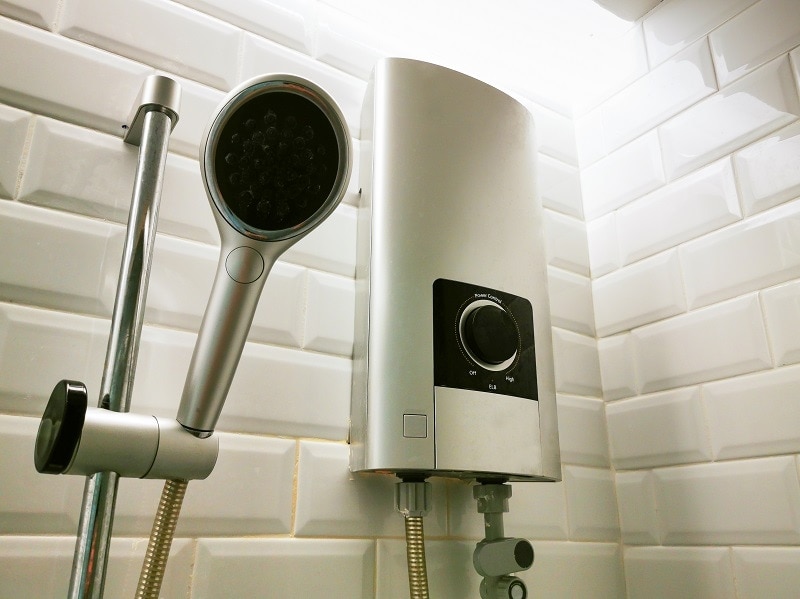
4. Condensing Tankless Water Heater
The condensing tankless water heater leverages the hot exhaust gasses 3 from the primary heat exchanger to further heat the water. They capture the gas emitted by the first exchanger and may have multiple exchangers, which means they’re more efficient than non-condensing heaters.
5. Hybrid Tankless Water Heaters
Hybrid tankless water heaters feature a small tank similar to the traditional variety but consume less energy by utilizing air from outside the tank. The model overcomes short-draw inefficiencies but is more expensive than condensing tankless water heaters.
Models for the hybrid tankless water heater were developed in the US and they feature an energy efficiency rating of 0.96, where 1.00 is perfect.
Where Is a Tankless Water Heater Used?
When selecting tankless water heaters, you’ll come across different models, fuel use, water capacities, and operation types. The right one depends on the size of your home, how much water you need, and your family’s usage capacity.
You’ll need to consider the appliances using hot water in your home and the fixtures required to have a tankless water heater operating efficiently. For instance, you’ll account for outlets that lead to your shower, tub, washing machine, dishwasher, bathroom, and kitchen sink.
Your tankless water heater can be installed indoors or outdoors depending on whether it uses gas, propane, or electricity or if it’s a condensing, non-condensing, or hybrid. Gas tankless heaters require exhaust, and while more energy-saving than electric ones, you’ll consider an outdoor exhaust vent.
For electric tankless heaters, you can have them installed indoors, which contributes to their durability as it’s not exposed to the elements. Installing a natural gas or propane heater, especially the non-condensing variety indoors, adds up installation costs due to the expensive exhaust system required.
Setting up your tankless water heater next to the plumbing fixtures of your house reduces wait time, and you can install multiple units to improve your hot water experience. Heat loss also occurs when water remains in pipes for a long, so keep your units within a reasonable distance from the appliances that require hot water.
It’s best to install point-of-use tankless water heaters and set them close to the fixtures that require the water. Another way to increase unit efficiency is to decrease your hot water pipe’s diameter or install a circulation pump.
You’ll also consider the flow rate of a tankless water heater when installing it for your shower, faucet, sink, or other hot water application. Flow rate is expressed as gallons per minute, meaning how much water passes through the unit for sufficient heating and what eventually flows out of the tap.
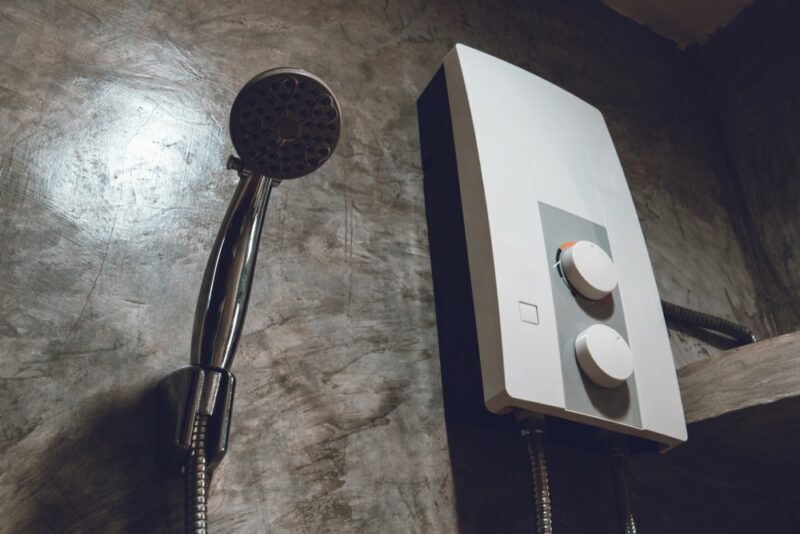
Advantages of a Tankless Water Heater
The most significant upside of a tankless water heater is that you only heat the water you need, and the unit stays dormant when there’s no hot water usage. Tankless water heaters are also known as on-demand water heaters, as energy is only expended when you’re using the hot water, unlike tank-storage ones that keep hot water in the tank.
Besides slashing your energy bill by double-digit percentages, they’re also longer lasting and easier to maintain than the traditional tank variety heaters. Heat exchangers, a vital component of tankless water heaters, are a series of tubes passing over a heating element or gas burner.
However, there are several variables to consider before choosing a tankless water heater for your home, as energy efficiency decreases with higher water usage.
- Convenience: A tankless water heater is more compact compared to conventional tank storage heaters and will save space in your house. They provide a near-endless stream of hot water in seconds when properly installed, allowing you to save time. They are easy to use.
- User-Friendliness: Modern tankless water heaters come with a front-facing panel that’s user-friendly and which allows you to control hot water settings. For instance, you’ll be able to adjust fuel settings, whether electricity, natural, or propane gas, or manage the amount of water and the heat temperatures you need.
- Efficiency: Compared to conventional water heaters, a tankless water heater will lower your energy consumption by providing on-demand hot water. Efficiency is also determined by the type of fuel your heater uses. Whether it’s electric, gas, and propane powered, they are 30% more efficient than traditional ones.
- Durability: Tankless water heaters last longer in comparison to conventional storage-type water heaters by up to 12 years. They also have replaceable parts, and with proper care and maintenance, you can be assured of an extended lifetime of effective usage.
Disadvantages of Tankless Water Heaters
When considering a tankless water heater, there are factors that you’ll weigh against a conventional or any other type of hot water production for your home. Some of these attributes depend on your specific preferences, while others will rely on the amount of water or type of fuel available for your heater.
Select an electric-powered tankless water heater if your hot water consumption is a little less, as these aren’t designed to cater to high demand, unlike gas-powered units. If you need the right GPM of a tankless water heater installed, you may question the system’s efficacy or cost-saving nature.
A couple of downsides of using a tankless water heater when compared to the traditional tank-storage type include:
Misuse Risks: You risk miscalculating the hot water needed in your home when using a tankless water heater. While that equals inefficiency and high energy consumption, an underestimation may result in depriving hot water to other areas of your house.
For instance, if you have several appliances, such as a washing machine or dishwasher both running simultaneously, anyone using a tap or shower will need more hot water. If overloaded, the tankless water heating system may develop issues or shut down altogether, leaving your household without hot water.
Performance Issues: A non-condensing or condensing tankless water heater won’t operate effectively if there’s a blockage in the inlet piping or exhaust system. Failure to vent or insufficient water to heat the heater can also prove a fire risk.
If your heater is on a low gas or propane supply, it won’t ignite properly, which often happens if other appliances in your home are using the same fuel type.
Buildup of Mineral Deposits: When you live in an area with hard water, the buildup of magnesium and calcium deposits will affect your tankless water heater, although it’s not a unique problem. Besides high energy usage, the scaling and calcification of pipes and heating elements will affect the heater’s performance with time and eventually lead to breakdowns.
Using a water filter helps with the buildup of mineral deposits in tankless water heaters to an extent. Still, regular servicing and keeping an eye out on the flow and temperature of your water are also required.
Cost of Tankless Water Heaters
A tankless water heater costs significantly more than conventional storage tank heaters, and the national average price is over $2,000. You’ll need an expert water heating technician to install your unit, and many will charge you close to $500. If your unit uses gas, a dedicated line must be installed, and one that’s electric-powered requires a power supply with an optional backup.
Another cost-prohibitive measure has multiple units to fulfill your hot water requirements, especially if yours is a large house. Category three venting will also need exterior wall renovations with the necessary piping, and in some areas, you need a water heater permit.
It’s no mean feat to install a tankless water heater, so you should be in the know when making plans when upgrading or installing a new unit. Any issues with your tankless water heater are better addressed by a professional rather than trying to repair or replace a unit DIY.
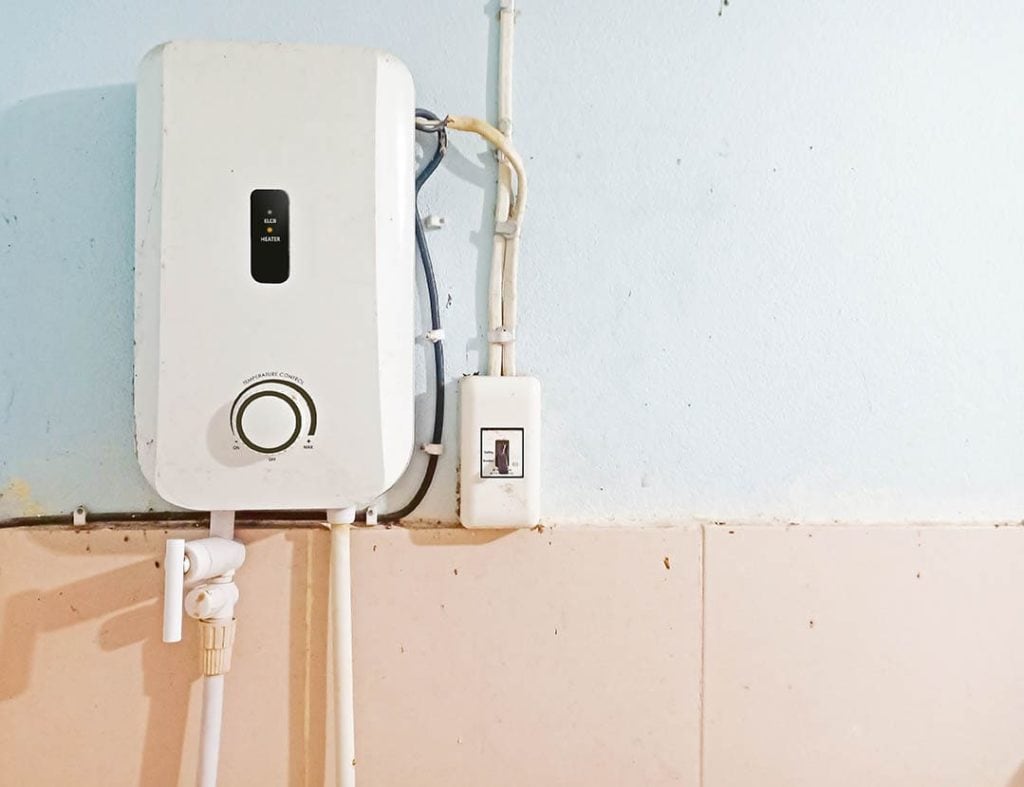
Frequently Asked Questions (FAQs)
1. How much does a tankless water heater cost to buy and install?
Tankless water heaters heat water directly from the cold water tap by use of heating elements and, in some cases, heat exchangers in-built into the unit.
The national average cost of tankless water heaters is around $2,000, and many specialist installers will charge you not more than $500 for installation.
2. Between condensing and non-condensing, what’s the most energy-efficient tankless water heater?
Condensing water heaters save more energy by reusing hot exhaust fumes from the primary exchanger, whereas the non-condensing type will vent these gasses outside.
3. Can I install a tankless water heater as a DIY enthusiast?
Tankless water heater installation isn’t a DIY as it requires updated wiring and gas lines, which prove a high fire risk. In many areas, building codes also require that a professional installer is involved so they can abide by municipal regulations.
4. Between gas and electric-powered tankless water heaters, what’s more expensive?
In terms of maintenance and fuel costs, gas-powered tankless water heaters are more expensive than electric-powered ones since they require venting but can heat more considerable amounts of water.
5. How do I ensure my tankless water heater maintains the quality and flow of hot water for longer?
With regular unit maintenance, such as constant filter changes or professional maintenance tests, you can ensure that your tankless water heater lasts longer and provides the full expected service.
Conclusion
A tankless water heater is the best option when providing your home with hot water in an environmentally friendly way. Now that you know how they work, you’re better informed to make the right choice depending on the size of your home, water consumption needs, and the fuel available.
While each tankless water heater type has its upsides and downsides, many have overlapping features and benefits that suit different households or consumers. They’re best for you when your decision is based on cost, whereas you may also consider their energy efficiency or hot water supply.
Without a tank to store water in, another of the benefits of a tankless water heater is space saving due to its size. Their portability makes it so that you can install one whenever needed or at point-of-use, whether over your kitchen sink or above the shower.
Maintenance and durability also come into play as it eventually ends up saving you money, plus space savings once installed. If the requirements for hot water in your household exceed the tankless water heater supply, consider installing more than one to cover all your needs.
Featured Image Credit: Onlyshaynestockphoto, Shutterstock
Contents




